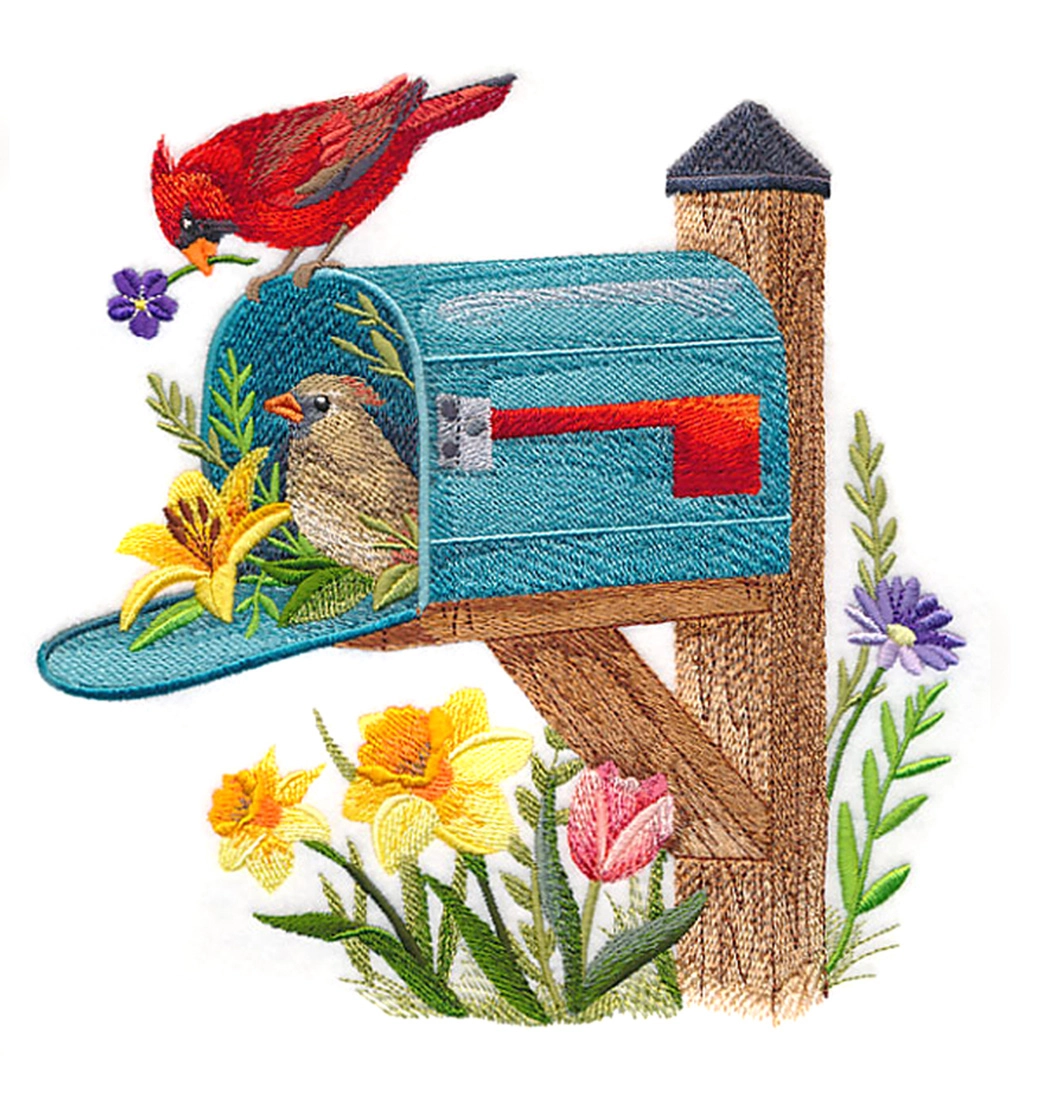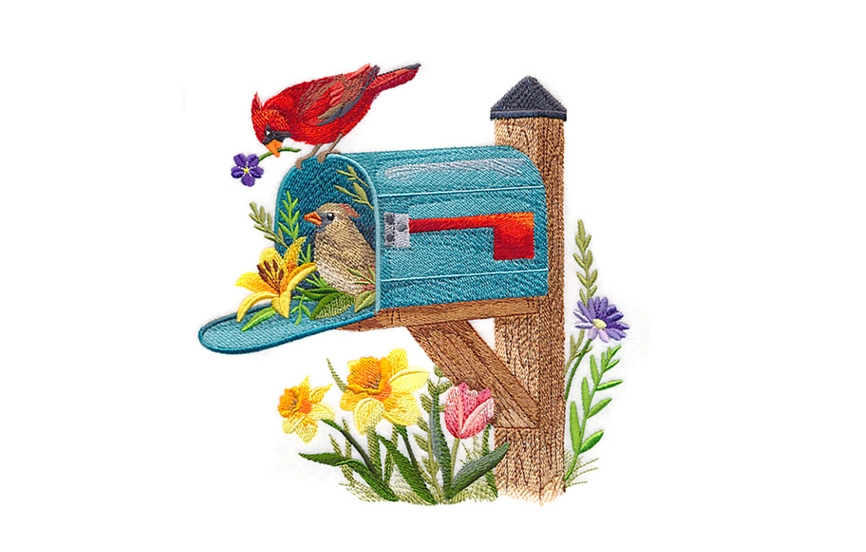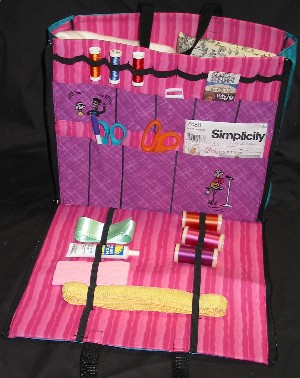
Sewists, embroiderers, and quilters love to bring their hobbies with them to classes, quilting bees, sewing circles, and clubs. But, how many times do we go to the bottom of a tote bag to retrieve a ruler or thimble and end up being stuck by a pin or needle?
Here's the answer! No more fumbling to find your favorite scissors. All your supplies are at your fingertips in this handy tote! Each item is in view or in a pocket for easy access, and there is a generous main compartment for fabric and batting. When you finish your outing, just zip up the flap, and you're ready to go!
Supplies
Supplies Needed:
One yard each of the outer (blue) and lining (pink) fabrics
1/2 yard of the pocket (purple) fabric
Two 14 inch separating zippers
1 1/4 yards of one inch wide nylon webbing (strapping)
2 yards of 3/8 inch wide elastic
1 1/4 yard of fusible webbing
1 1/4 yard of semi-rigid interfacing (like Timex or Peltex)
Embroidery Designs from Embroidery Library
Designs Used
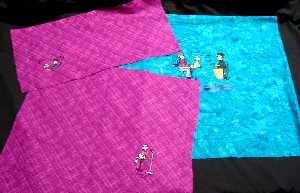
On the blue fabric, mark one rectangle that measures 17" wide by 15 1/2 inches tall.
On the purple fabric, mark one rectangle that is 17 inches wide by 13 inches tall, and mark another rectangle that is 17 inches wide by 7 inches tall.
In the blue rectangle, center the feature design with the border design below it, and sew it out on the fabric.
In the larger purple rectangle, sew out the checkbook design in the lower right quadrant of the rectangle. (Tip: Fold the rectangle in quarters, and sew the design centered in the lower right quarter of the rectangle.) The design should be centered in what will become the pattern pocket.
In the smaller purple rectangle, embroider the design so that the design is in the lower left corner of the rectangle. Make sure to leave a half inch seam allowance.
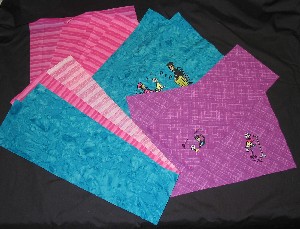
From the pocket fabric, cut out the 2 embroidered rectangles you marked.
From the lining fabric, cut out 3 rectangles that are 17 inches wide by 15 1/2 inches tall, and cut out one rectangle that is 44 inches wide by 6 inches tall.
From the outer fabric, cut out the embroidered rectangle you marked and one more rectangle that is 17 inches by 15 1/2 inches. Also cut out one rectangle that is 44 inches wide by 6 inches tall.
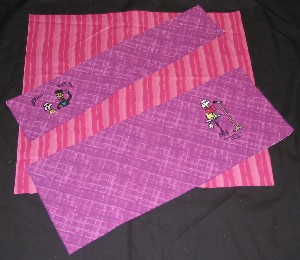
Assembling the Organizer
Fold the pocket rectangles in half by the width, wrong sides together. The top edge will now be the fold of the fabric.

Lay out one lining rectangle with the right side up. Lay the larger pocket piece along the bottom edge of the lining piece, matching the raw edges.
Lay the smaller pocket upside down across the lining piece, with the raw edges toward the top. The smaller pocket should overlap the larger pocket by an inch.
Use a half inch seam allowance to stitch the smaller pocket to the lining. Flip the smaller pocket up into place so that the top of the pocket is parallel with the top edge of the lining.
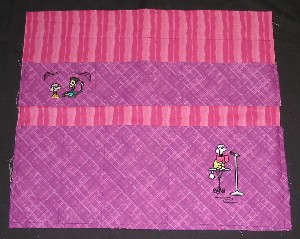
Stitch the larger and smaller pockets into place along the seam allowances at the outer edges of the lining piece.
Mark a line across the lining that is 1 3/4 inches up from the top of the small pocket.
Mark pocket dividing lines for each row of pockets as desired.
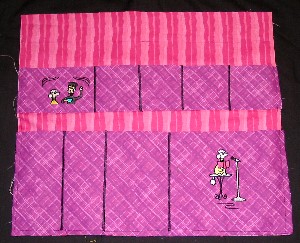
Use a narrow satin stitch to stitch the pocket dividers.
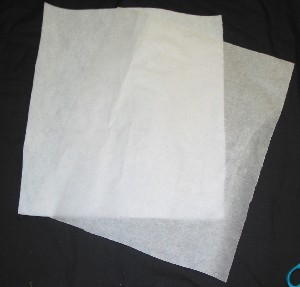
From the fusible webbing and the interfacing, cut out 3 rectangles that are 14 1/2 inches tall by 16 inches wide. Fuse the webbing to one side of each interfacing rectangle.
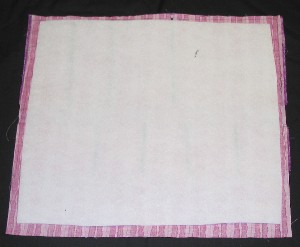
On the back of the assembled lining piece, center the interfacing rectangle with the fusible webbing toward the wrong side of the lining piece. Fuse the interfacing to the lining piece.
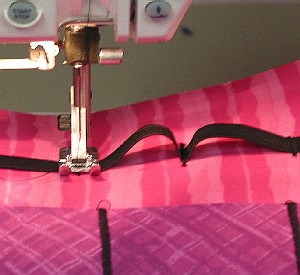
Use a bar tack stitch to secure elastic every 1 1/2 inches along the upper marked line. You will be sewing through the interfacing too. Leave a little slack between the bar tacks, so that it is easy to insert spools of thread.
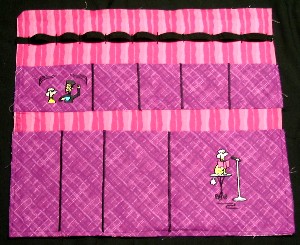
In this illustration, the row of elastic holders is finished.
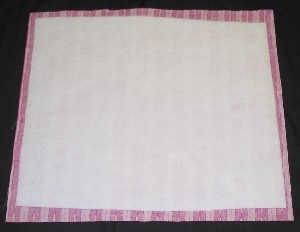
Assembling the Flap
On the back of another lining piece, center the interfacing rectangle with the fusible webbing toward the wrong side of the lining piece. Fuse the interfacing to the lining piece.
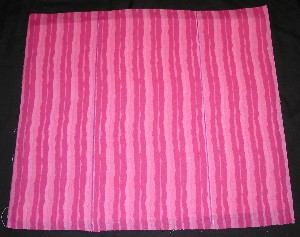
Turn the fused piece over, and mark 2 vertical lines. One should be 5 inches from the right side and the other should be 5 inches from the left side.
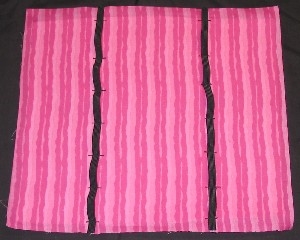
As you did with the other elastic holders, use a bar tack stitch to secure elastic every
2 1/2 inches along the marked lines
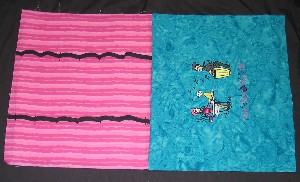
Place the assembled lining piece on top of the embroidered blue outer piece, with right sides together and meeting the top edges. Use a half inch seam allowance to stitch the pieces together at the top.

Lay out the joined pieces with the right side up.
Remove the zippers from their packaging and place each zipper face down 1/2 inch from the edge and bottom on each side of the blue outer piece. The separating end should be to the bottom of the outer piece.
Edge stitch each zipper to the outer fabric.
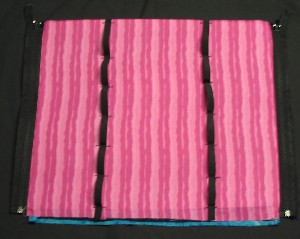
Flip the zippers so that the seam allowances are to the wrong side of the outer fabric. Fold the lining piece over the wrong side of the outer fabric. The zippers should be sticking out from each side.
Tuck the top ends of the zippers in between the outer and lining fabric pieces. On the lining piece, fold each side seam allowance to the inside, and topstitch the lining piece to the outer piece along the stitched edge of the zipper. This will cleanly finish the sides.
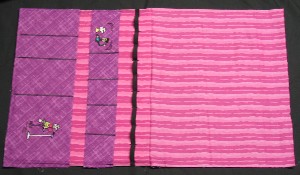
Assembling the bag
Now take your other assembled lining piece, and one more rectangle of lining. Put the pieces right sides together, and use a 1/2 inch seam allowance to stitch them together at the top.
Lay the pieces out as shown.
Unzip the zippers, separating them. Lay each zipper 1/2 inch from one side and bottom of the plain lining piece. Make sure that the zipper pieces are on the same side as their mate. Assemble the lining pieces together in the same manner as the flap.
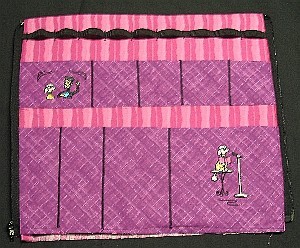
Here is the assembled bag side. You can see the zippers sticking out from the sides.
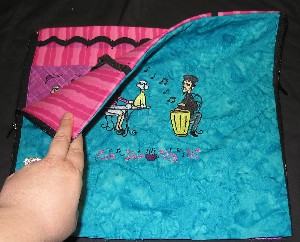
Zip the flap to the bag side.
Join the bottom edges by stitching all the layers together 1/2 inch from the bottom raw edges.
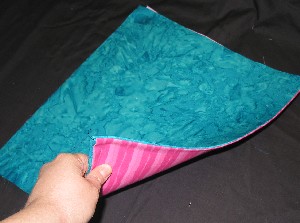
Create another side for the bag by placing the remaining large rectangles right sides together, and stitching a seam along one long side. Fuse the remaining interfacing piece to the lining part of the side and fold the outer fabric over the interfacing.
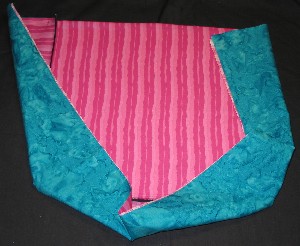
Place the last 2 long rectangles wrong sides together.
Mating the outer fabric sides, use a 1/2 inch seam allowance to stitch the side/bottom piece around the sides and bottom of the plain bag side. Finish or encase the seam allowances.
On the long unfinished edge of the side/bottom pieces, fold over 1/2 inch to the lining side, and press to crease. Hem or encase the short ends.
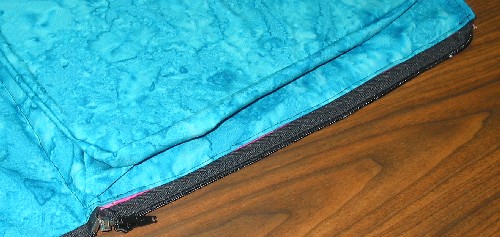
Meet the folded edges of the side/bottom piece to the plain side of the assembled bag side. Pin or baste into place. Stitch the bag body into place all the way around along the folded edge of the side/bottom piece.
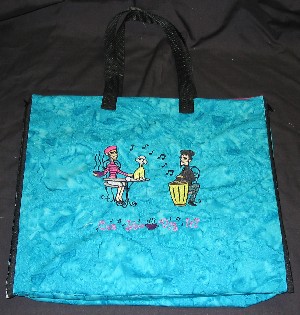
Cut the strapping in half, and stitch the ends centered 4 1/2 inches apart on the plain side and the flap.
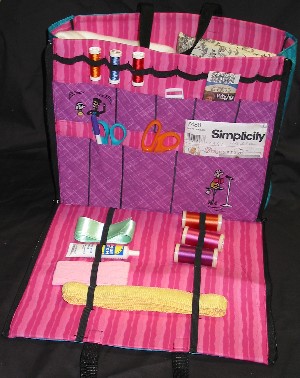
You'll find that this bag will hold just about any tool or supply that can come out of your sewing room. And, when your sewing friends see it, they are sure to want one too!


